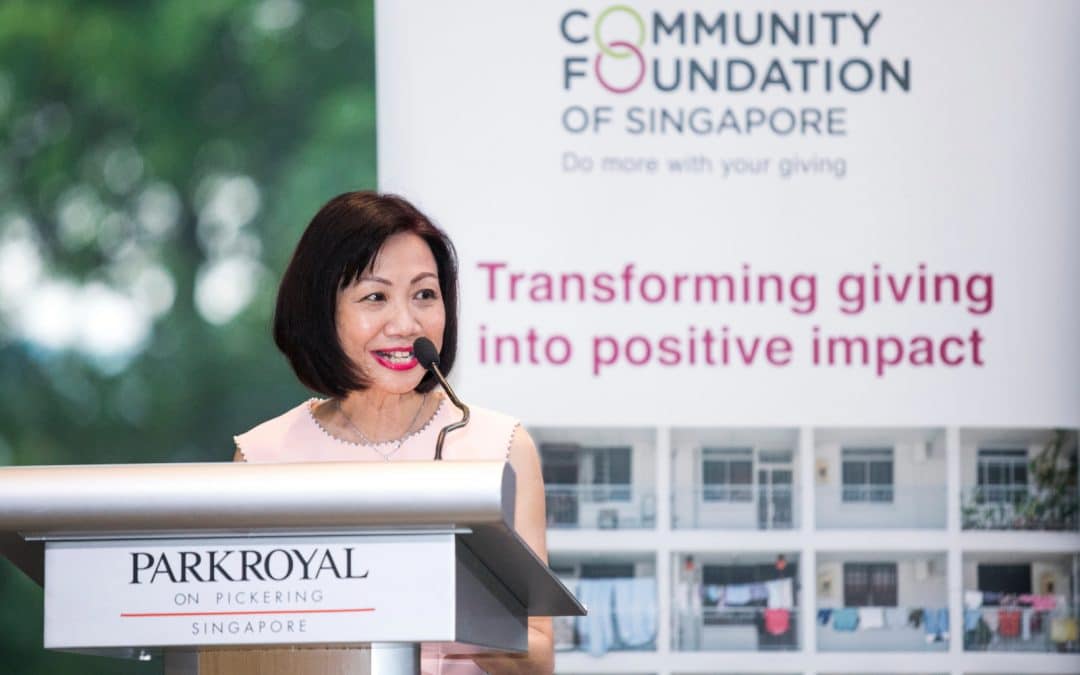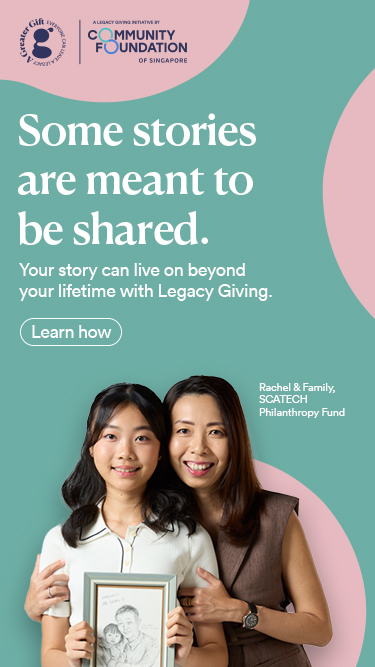A turning point for community philanthropy


In the life of any organisation, there are special moments that will be remembered as being turning points.
Last month, CFS held our Philanthropy Forum 2019, where we were extremely privileged to have keynote speaker Ms Eileen Heisman share with us several crucial moments in her career that fueled the growth of National Philanthropic Trust (NPT). As its President and CEO, Eileen has been responsible for steering NPT to raising an incredible US$13 billion in charitable contributions over the last 22 years.
Some of you might know Eileen was a founding member of CFS’s international advisory committee 10 years ago. As we come full circle, Eileen was once again in town to encourage, challenge and inspire us with a vision of what CFS can achieve.
Stepping into a new phase of growing philanthropy in Singapore, I believe this time will be remembered as a turning point in CFS’s history, in more ways than one.
We know that community philanthropy is poised for exponential growth in the next decade. The past year has been a phenomenal year for CFS– in financial year 2018, CFS achieved a year-on-year, four-fold increase in donations amounting to S$35 million. A big thank you to our donors, community partners and collaborators for helping to make this possible.
But what else is needed to create lasting social change? How can we grow from smaller, ad hoc and fragmented giving to bigger, better and smarter giving? Donor advised funds are the way to go as they enable smarter, better giving by helping donors give more thought to the purpose of their charitable dollars.
To take CFS into the future, CFS also welcomed our new Chairman Christine Ong on 1 April, taking over the reins from Laurence Lien. I am deeply honoured to have worked closely with Laurence to build a strong foundation for CFS and confident Christine’s extensive experience in banking and finance, corporate social responsibility and the community will usher CFS into a new phase of growth.
It may be another 10 or 20 years before we look back again at this moment, but I’m sure it will be one we will all be proud of.
Catherine Loh
CEO
Community Foundation of Singapore
In the life of any organisation, there are special moments that will be remembered as being turning points.
Last month, CFS held our Philanthropy Forum 2019, where we were extremely privileged to have keynote speaker Ms Eileen Heisman share with us several crucial moments in her career that fueled the growth of National Philanthropic Trust (NPT). As its President and CEO, Eileen has been responsible for steering NPT to raising an incredible US$13 billion in charitable contributions over the last 22 years.
Some of you might know Eileen was a founding member of CFS’s international advisory committee 10 years ago. As we come full circle, Eileen was once again in town to encourage, challenge and inspire us with a vision of what CFS can achieve.
Stepping into a new phase of growing philanthropy in Singapore, I believe this time will be remembered as a turning point in CFS’s history, in more ways than one.
We know that community philanthropy is poised for exponential growth in the next decade. The past year has been a phenomenal year for CFS– in financial year 2018, CFS achieved a year-on-year, four-fold increase in donations amounting to S$35 million. A big thank you to our donors, community partners and collaborators for helping to make this possible.
But what else is needed to create lasting social change? How can we grow from smaller, ad hoc and fragmented giving to bigger, better and smarter giving? Donor advised funds are the way to go as they enable smarter, better giving by helping donors give more thought to the purpose of their charitable dollars.
To take CFS into the future, CFS also welcomed our new Chairman Christine Ong on 1 April, taking over the reins from Laurence Lien. I am deeply honoured to have worked closely with Laurence to build a strong foundation for CFS and confident Christine’s extensive experience in banking and finance, corporate social responsibility and the community will usher CFS into a new phase of growth.
It may be another 10 or 20 years before we look back again at this moment, but I’m sure it will be one we will all be proud of.
Catherine Loh
CEO
Community Foundation of Singapore
- Related Topics For You: CHARITY STORIES, DONOR STORIES, DONOR-ADVISED FUND, EVENTS, NEWS, OPINION



